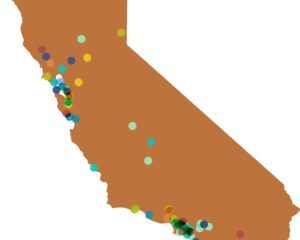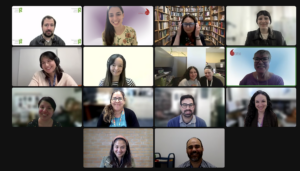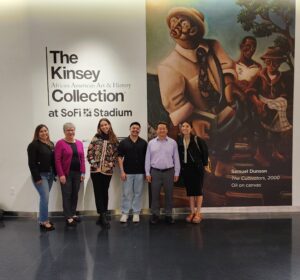Throughout the month of April, as spring finally reappears throughout our state, we have the chance to enjoy and celebrate the great outdoors, and reap the benefits of good exercise, clean air, and pure water. It is, after all, not only the month of Earth Day (April 22), but also National Walking Day (April 3), World Health Day (April 7), and Arbor Day (April 26). Below, we’ve listed some past projects and upcoming events that help us examine how we relate the health of our bodies and communities to that of the earth.
From farm to film: the Evolution of Organic
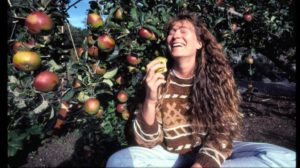
How did California, the epicenter of industrial agriculture in the US, become a hotbed of activism around the organic movement? The recipient of a California Documentary Project grant, Evolution of Organic seeks to explore this story. The film, which premiered in 2017, continues to have screenings around the state including an upcoming screening on April 12 in Napa and April 25 in Santa Monica. By Mark Kitchell, who also directed California Humanities-supported films Berkeley in the 60s and A Fierce Green Fire, the documentary details the rise of alternative ecology and organic agriculture in California from the rebellious back-to-the-landers and activists of its origin to the mainstreaming of sustainable food today.
A pretty business: flower growers throughout the state
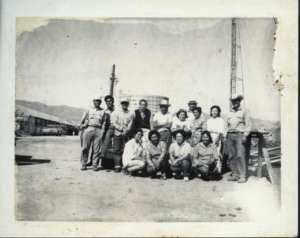 As California’s population grows and industries around the state change, histories of agriculture get paved over in the form of new suburbs, office parks, and migrated communities. Two California Humanities grant projects focus on uncovering the hidden histories of flower growers in Salinas and San Diego. In September 2018, the Salinas Valley Japanese American Citizens League partnered with California State University Monterey Bay to open an exhibition and program series, Gambatte Kimashita, that explored the story of the Japanese immigrants who arrived in California after World War II and built a successful flower growing industry in the Salinas Valley. The exhibition, recipient of a Humanities for All Quick Grant, included a panel discussion with members of the original flower grower community and conversation about the history of Japanese immigrants in the Salinas Valley. At the southern end of the state, the once-thriving floraculture industry in North San Diego County has all but disappeared as farms and fields have been transformed into suburban housing tracts. With support from CSU San Marcos scholars and a California Humanities Community Stories grant, the San Dieguito Heritage Museum in Encinitas produced The Flower Farms of San Dieguito, a multi-part exhibition and event series including oral histories collected from the laborers, growers, plant scientists, and other local residents who made this region the “Flower Capital of the World” in its heyday. Their exhibit, Flowers, Farms, and Families opens on May 18 with a gala farm-to-table dinner at The Heritage Ranch.
As California’s population grows and industries around the state change, histories of agriculture get paved over in the form of new suburbs, office parks, and migrated communities. Two California Humanities grant projects focus on uncovering the hidden histories of flower growers in Salinas and San Diego. In September 2018, the Salinas Valley Japanese American Citizens League partnered with California State University Monterey Bay to open an exhibition and program series, Gambatte Kimashita, that explored the story of the Japanese immigrants who arrived in California after World War II and built a successful flower growing industry in the Salinas Valley. The exhibition, recipient of a Humanities for All Quick Grant, included a panel discussion with members of the original flower grower community and conversation about the history of Japanese immigrants in the Salinas Valley. At the southern end of the state, the once-thriving floraculture industry in North San Diego County has all but disappeared as farms and fields have been transformed into suburban housing tracts. With support from CSU San Marcos scholars and a California Humanities Community Stories grant, the San Dieguito Heritage Museum in Encinitas produced The Flower Farms of San Dieguito, a multi-part exhibition and event series including oral histories collected from the laborers, growers, plant scientists, and other local residents who made this region the “Flower Capital of the World” in its heyday. Their exhibit, Flowers, Farms, and Families opens on May 18 with a gala farm-to-table dinner at The Heritage Ranch.
Far from barren: projects exploring the complexity of the Mojave Desert
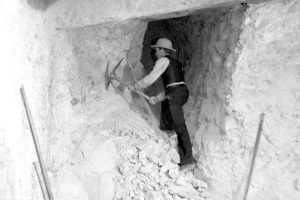
The driest desert in North America, the Mojave, which stretches almost 50,000 square miles across inland Southern California, is a place of many extremes. Two California Humanities projects focusing on this region provide a deeper look at this dynamic high desert region, with its sparse population belying a complex web of human and inter-species connections. The Mojave Project by 2015 California Documentary Project grantee Kim Stringfellow is an ongoing transmedia documentary exploring the social, cultural, and physical landscape of the Mojave Desert: a vast, seemingly remote region spanning 45,000 square miles that paradoxically is considered one of the world’s most urbanized deserts. Through April 21, you can see an installation featuring the project at Unpaved Gallery, an artist-run space dedicated to cultivating a dialog of contemporary art in the Mojave Desert. In 2017, the Hi-Desert Nature Museum in Yucca Valley received a Humanities for All Project Grant for Our Giant Rock: A Community Touchstone in the Mojave, a multimedia project incorporating a digital touch screen exhibit and related public programs exploring a distinctive local geological formation and its relationship to the history of the local community as an intermediary and hub for honoring Mojave heritage by connecting stories, characters and events.
Preservation by the sea: ecology and history in a coastal community
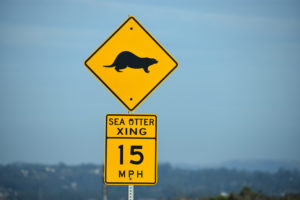
Sea otters, Spanish settlers, native peoples and Mexican farmers—Elkhorn slough, at the very center of the incredibly biodiverse and rich agricultural region of the Monterey Bay, has been home to all of these and more. In 2018, California Humanities awarded a Humanities for All Project Grant to the Elkhorn Slough Foundation in Moss Landing, to create a multi-media project to strengthen the public’s understanding of the connections between natural and human communities in the region. The exhibit, The Cultural Heritage and Historical Ecology of the Elkhorn Slough Woven Across Time, opens this May, and will incorporate a digital touch screen, an interactive timeline, audio recordings, and historical artifacts, weaving accounts from early peoples and current residents into the story of ecological changes produced by humans and natural forces.


